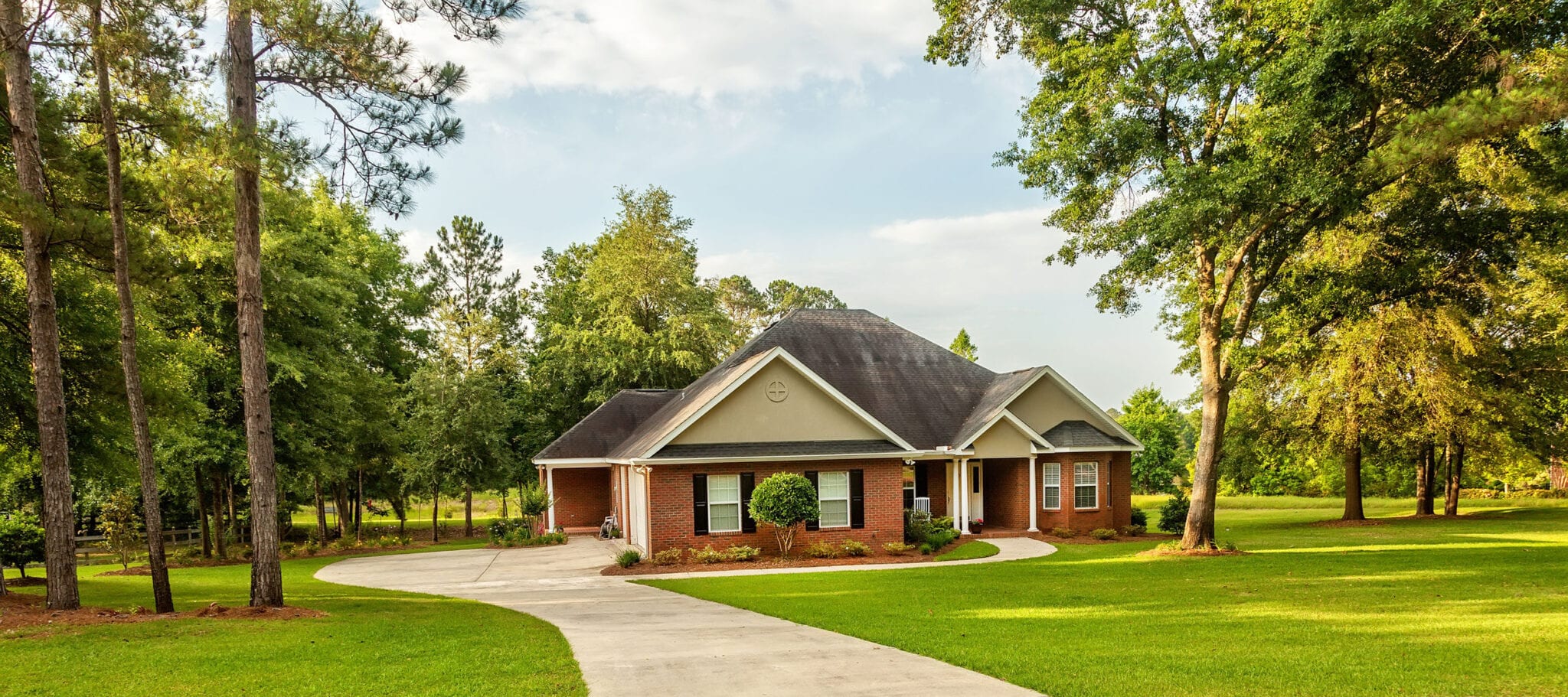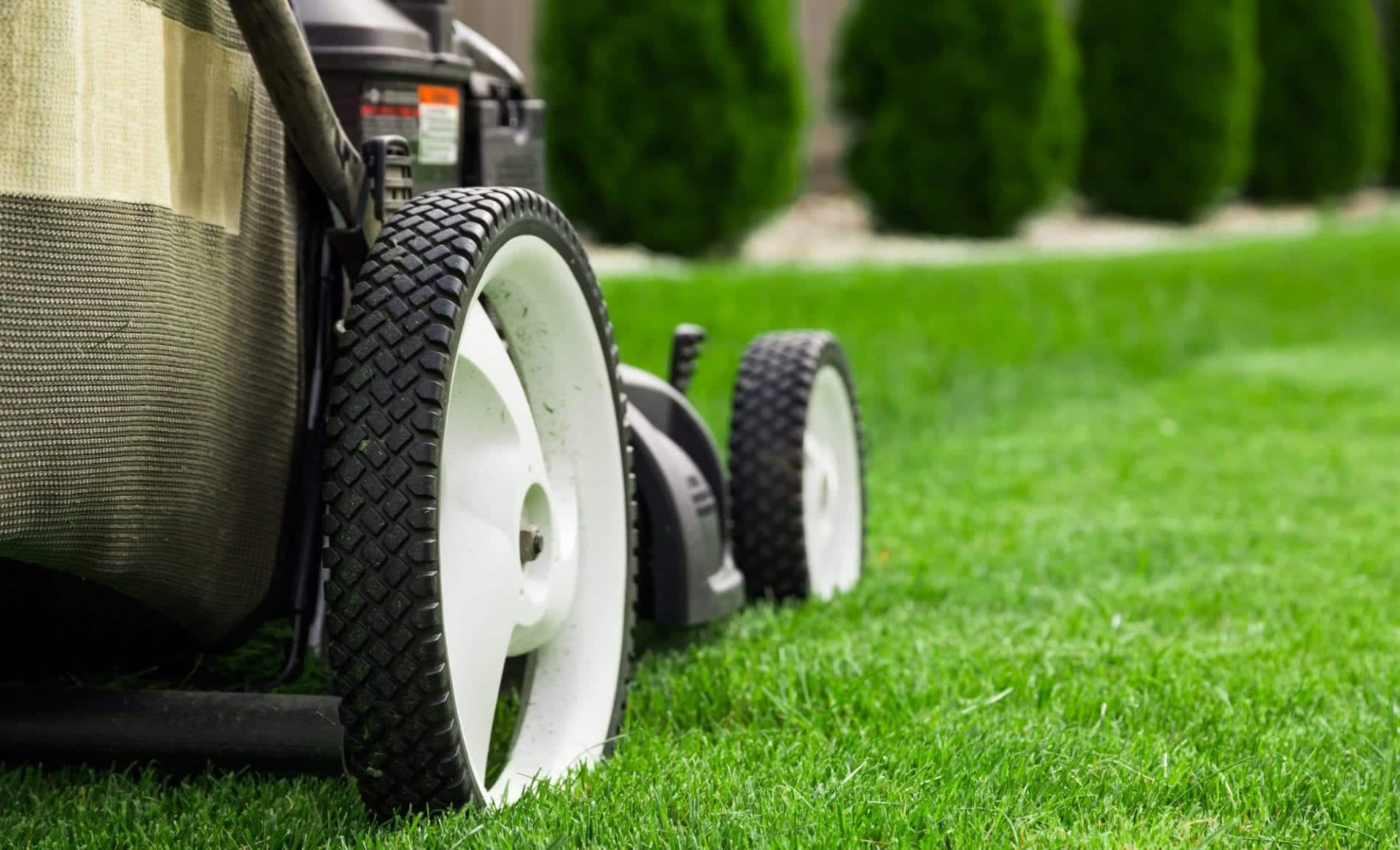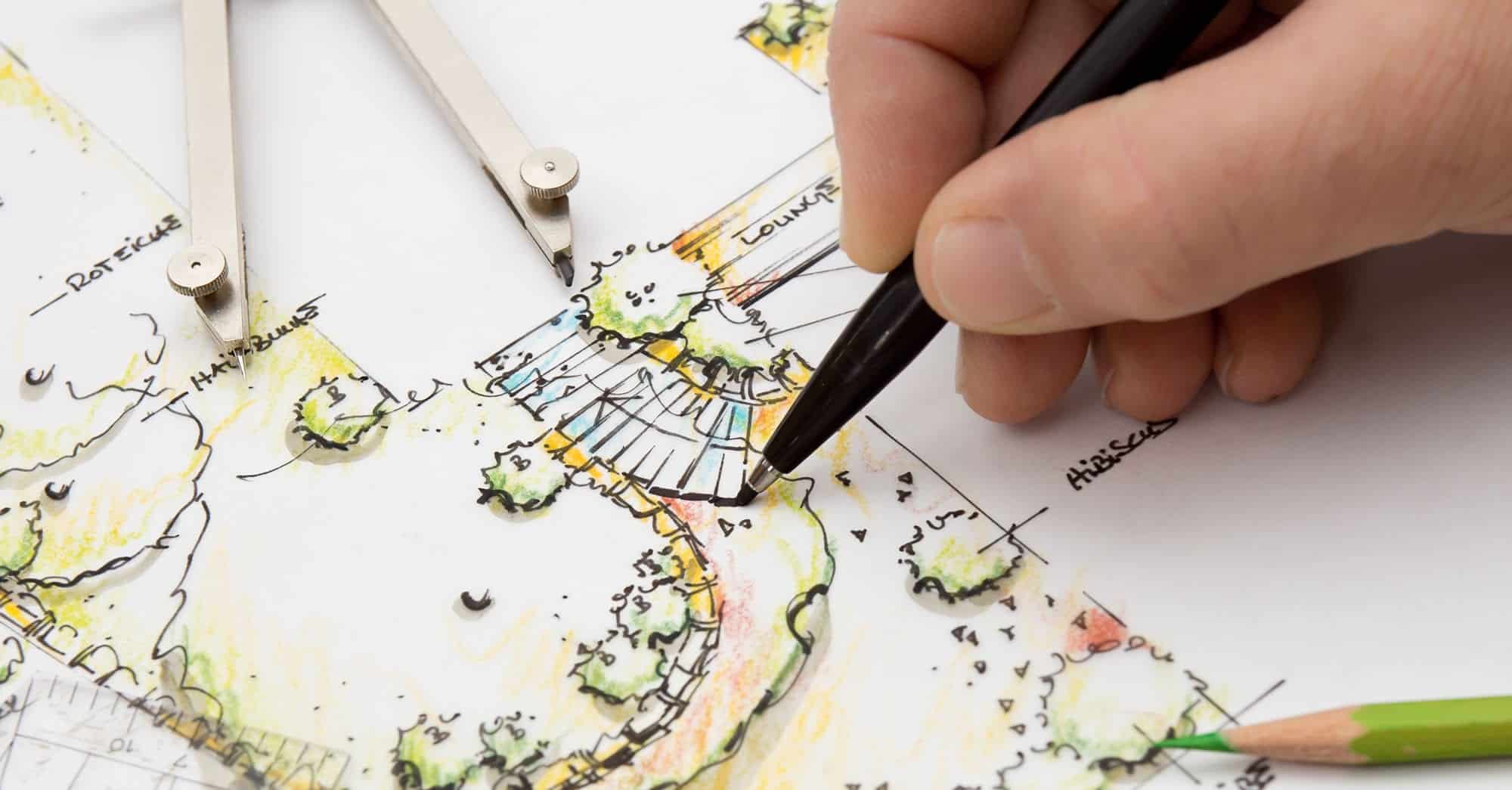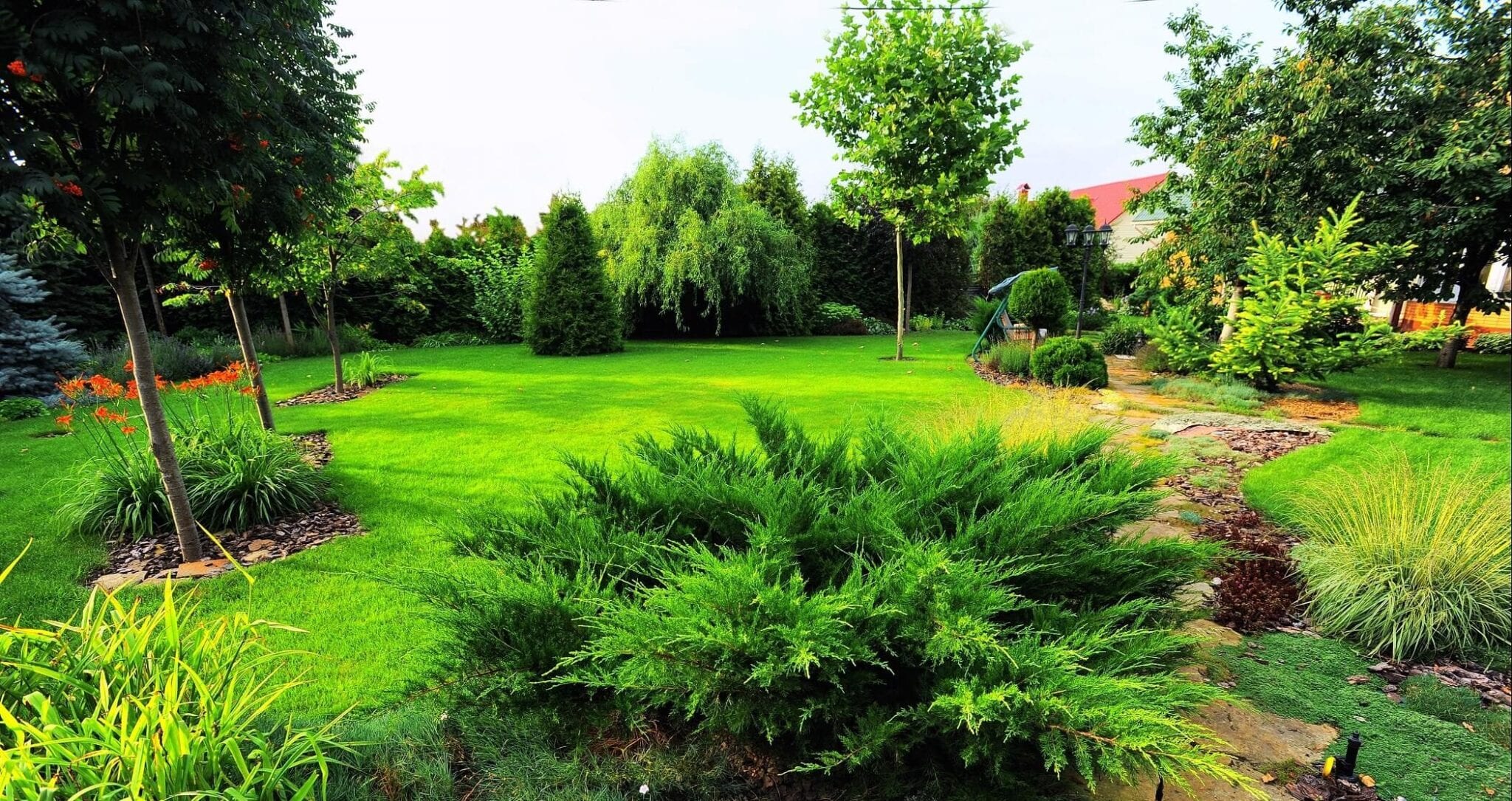
The exterior appearance of your home is an important detail, and one guests and neighbors notice immediately. Creating the design for your new landscaping can be intimidating and overwhelming with how many options are available. However, it’s your goal to create a space that is enjoyable, appealing, and fitting to your lifestyle. While homeowners choose an array of designs for both their front and back yards, there are many rules and elements to consider to guarantee your landscaping project goes smoothly.
Select Plants Appropriate for Your Climate Zone
When choosing the plants and greenery that will be added to your landscaping, it’s vital to select plants that thrive in the part of the country you live in as climates differ across the world. It’s suggested to take advantage of and become familiar with local plant species as there are many appealing options, and they are more likely to have a longer lifespan. Selecting local plant species also guarantees water requirements are appropriate for your climate, and the plants won’t grow too large when compared to other plant life present in your landscaping. The type of grass you choose for your lawn should also be selected based on climate, as selecting the wrong grass can result in it dying or more demanding maintenance requirements.
- Add Movement. Having an assortment of different plants and grasses will make your landscaping more interesting to look at by adding life and elements unique to you. The addition of flowers will attract hummingbirds and butterflies, and berry producers will attract various species of birds.
- Add an Artificial Grass Lawn. If you have a large area to cover and you don’t want to deal with the maintenance requirements that come with natural grass, installing an artificial grass lawn could be your answer. This method is an excellent choice for high-traffic yards and individuals with little time.
Don’t Get In Over Your Head
While your landscaping project will be exciting and you’ll be introduced to many different options for your property, you mustn’t get carried away. Be conscious of the size of your outdoor space when compared to your house. It’s encouraged to keep your landscaping close to your home and focus your budget into one area. This results in a budget-friendly option that creates a high-quality final product that is more effective and fit for your space.
- Identify Focal Points. Choosing the pieces in your garden that you want guests to focus on creates an engaging experience for them. Focal points should be carried out throughout your landscaping for the eye to follow and can be items such as specimen trees, statues, benches, and many more.
Establish Your Availability and Time Commitment
While choosing your outdoor layout and greenery or plants, consider the level of work and maintenance you’re willing to put in regularly. If you travel frequently or don’t have the physical capacity to tend to your garden, perennial plants are a great option as they will grow back year after year. Additionally, you should consider thoughts to add an outdoor kitchen or pool, as well as both options require regular cleaning and maintenance.
- Incorporate Xeriscaping. Finding a landscape design that requires minimal watering and maintenance is another option to consider. Many tend to stay away from xeriscaping due to the assumption that it will appear barren or desert-like. Realistically, it offers an array of textures, colors, and attractive features that can make your yard into an oasis away from home.

Care for Your Lawn Regularly
Lawn and garden maintenance can be challenging for many homeowners as they’re unaware of proper steps to keep these areas healthy year after year. It is encouraged to seed and aerate your lawn one to two times a year or in the spring and fall. Executing these processes will allow your soil not to become compacted, and your grass will have more room to grow and gain strength. Additionally, establishing a regular schedule for fertilizing, watering, and mowing will help you cultivate the beautiful landscape you’ve always dreamed of.
- Equipment Accessibility. When designing your landscaping, it’s vital to consider the lawn care equipment you have and where additional equipment can go when considering future building projects or repairs. You want lawncare equipment to be easily accessible and unable to harm any greenery when transporting. It’s often helpful to incorporate a designated space made of concrete or other material into your landscaping design that can be utilized specifically for projects and repairs.
Watch Out for Angled Surfaces
Rainwater and other weather elements should be taken into consideration as any hard surfaces are candidates for runoff. To avoid the chances of potential runoff from being directed at your property, it’s encouraged to ensure that all hard surfaces aren’t sloped toward your foundation. This will alleviate the potential for water damage or pooling in many spaces such as your home, basement, garden, and lawn.
Make a Note of Shady Areas
Determining the locations of trees and greenery in your landscaping design can be challenging. It’s essential to consider the path of the sun and where shady areas are located. Plants require specific amounts of sun and shade daily, and if one is planted in an incorrect area, it won’t last long, which results in wasted money. Before finalizing any decisions, take some time to watch your space at various times of the day and make a note of changes, so you’re aware and knowledgeable of the best places for your plant life.

Explore Different Design Options
The design process can be intimidating when considering your budget and how detailed of a design you may or may not want. The beauty of outdoor landscaping is that most living elements can quickly be regrown. Upon establishing the basics of your plan, it’s encouraged to veer away from what you’re comfortable with and take action to explore elements and details that aren’t present in your existing layout. This allows you to experiment with color, structure, and overall design, which will help you create a design unique to your style.
- Compliment Your Home With Landscaping. Many forget to utilize landscaping to accent their beautiful home. Add greenery around your home to soften the edges and help it blend in with the rest of your design.
- Incorporate Multiple Decks or Patios. Having numerous functional spaces varying in size can help enhance the visual appeal of your property and give you more area to incorporate unique elements.
- Add Labyrinths and Curves. These design elements add interest and a sense of exploration to your landscaping for both you and guests. Incorporate long, subtle curves and whimsical labyrinths to create a design everyone enjoys.
Identify Where You’ll Need Professional Help
Check-in with every project you’re needing completed for your landscape design and make a note of what items you can complete on your own and those that may require a licensed professional. It’s encouraged to do this early in the design process as many contractors will need to be booked for work a few months in advance during the warmer seasons. Prices and available services vary by company, so calling around, reading reviews, and looking at past project experience are all key factors to ensure you’re getting the best deal.
Update Your Homeowner’s Insurance Provider
If you’re hoping to install an outdoor kitchen, pool, or backyard shed, you should prioritize contacting your insurance provider. These additions add to the value of your home but may also require additional insurance coverage. Additional coverage will ensure that all added areas are covered and accounted for if your home is damaged during inclement weather or other factors.
Identify Local Ordinance Requirements
As you plan for more considerable additions to your landscaping design, such as a patio, pool, or outdoor kitchen, it’s essential to review local ordinances for your city as well as any restrictions established by your homeowner’s association (HOA), if applicable. With any developmental addition, property owners are required to stay within the limits of their property and request permits if needed. States, counties, and townships all have restrictions regarding the amount of area to cover, and identifying these before project start can save you from potential hassle in the future.
- Be Aware of Zoning and Permits. Understanding municipal zoning regulations and rules will ensure smooth project execution. Your contractor must know the latest codes and establish a proper permit pulling system as well. If zoning and permits aren’t accounted for, it could lead to removing or correcting elements of your design at project finish, which can be very costly.

Start Creating Your New Landscape Design
Your home thrives off a successful landscaping design and, in turn, you continue building the perfect space for your lifestyle, one you may have dreamed of for quite some time. Accounting for the various elements and rules that go into planning your design is essential for project success. The topics above are a great place to start your landscaping journey, and if you have any areas of uncertainty, many contractors can stand by your side every step of the way.
